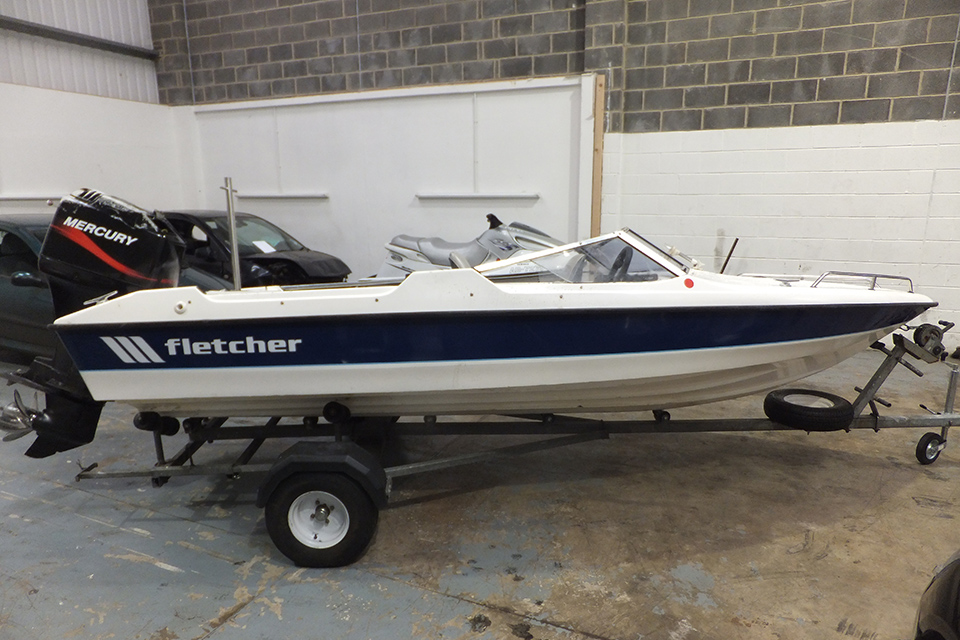Capsize of Fletcher 155 speedboat with loss of 1 life
Location: Tor Bay, England.
Accident Investigation Report 21/2015
Investigation report into marine accident including what happened, safety lessons and actions taken:

Summary
On Saturday 2 May 2015, an unnamed Fletcher speedboat with one adult and three teenage children on board capsized after encountering a large wave. Three of the occupants managed to swim clear of the upturned hull but one of the children became trapped. Despite valiant attempts to free her, she was only recovered following attendance of the RNLI lifeboat 25 minutes later. Although medical treatment then started immediately, she never recovered consciousness.
The investigation found that a strap on the back of the girl’s buoyancy aid had become snagged on the starboard aft mooring cleat. The buoyancy aid was not a close fit, increasing the opportunity for it to become snagged. The actual height of the large wave encountered is unknown. In addition to the speedboat’s course and speed in the prevailing sea conditions, potential contributing factors to the capsize of the speedboat were the fitting of a new propeller to the outboard engine, the small quantity of fuel in the bow tank and the manner in which the engine speed was increased prior to the accident.
Safety lessons
-
the young girl sadly drowned as a result of the strap of her buoyancy aid snagging on the aft starboard mooring cleat of the speedboat after it capsized and sank by the stern
-
the speedboat capsized after encountering a large wave. The speedboat’s relative course and speed contributed to the capsize but other potential contributing factors were the fitting of a new propeller, the low quantity of fuel in the bow tank and the manner in which the engine speed was increased
-
if the speedboat had met the requirements of the Recreation Craft Directive (RCD), it would not have sunk by the stern. Buyers should be cautious and aware of potential shortcomings of leisure craft constructed before the introduction of the RCD in 1996
-
the adult extra-large buoyancy aid worn by the young girl was not close fitting, increasing the risk of it becoming snagged
-
while not contributing to this accident, the kill cord not being worn by the driver highlights the need to continue raising awareness of the issue in the speedboat community
Actions planned/taken
The RYA intends to continue to promote in its training syllabi, and published articles and editorials including:
-
local weather forecasts and likely sea conditions for the intended area of operation should be obtained before deciding on venturing to sea
-
lifejackets and buoyancy aids should be the correct size for the wearer and adjusted to be a close fit
-
kill cords should always be attached to the driver before operating the engine
In particular, the RYA intends to publish an article on boat design in the RYA Magazine (Winter 2015) that will include the potential shortcomings of boats constructed prior to the introduction of the RCD in 1996 and those that might have been substantially modified when sold second-hand.
British Water Ski and Wakeboard is developing its boat driver and examiner training and has undertaken to ensure the safety issues identified in this report will be incorporated in their training material. The findings of the our report will also be publicised through its network and with the launch of its new driving syllabus.
Recommendations
As a consequence of the actions being taken, no recommendations have been issued in this report.